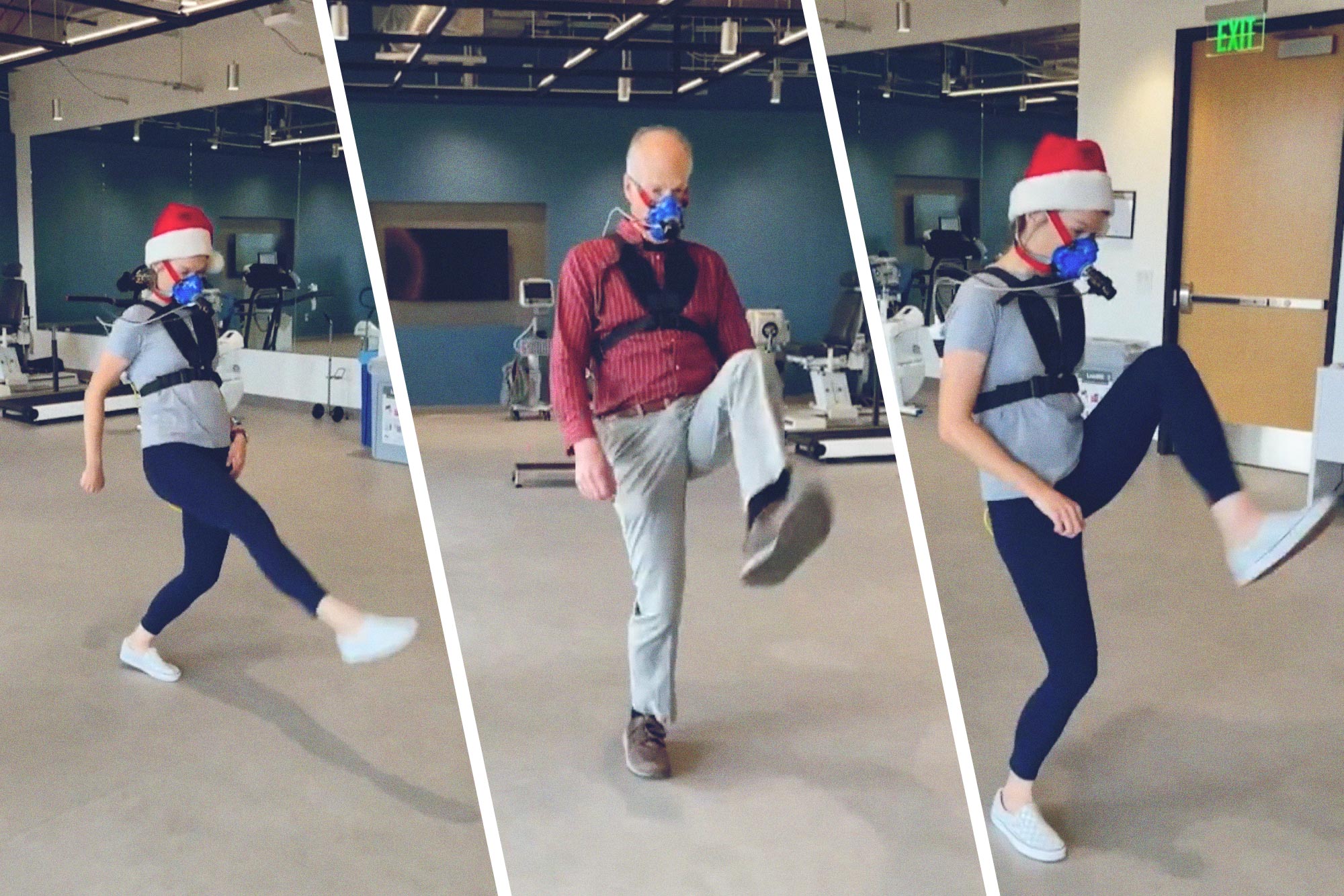
UVA researchers joined other collaborators to measure whether the kinds of exaggerated strides made famous by a cult-classic comedy sketch offer health benefits. (Contributed photos)
It is the time of year when many of us turn our attention to a healthier lifestyle, eating a few more fruits and vegetables and maybe picking up a new exercise routine. When it comes to making those decisions stick, finding a diet and exercise routine that is especially enjoyable can make all the difference.
Even better? Discovering that a silly walk can give your health a boost.
Combining the science of exercise physiology with a healthy dose of fun, Siddhartha Angadi, an assistant professor of kinesiology at the University of Virginia School of Education and Human Development, and colleagues decided to measure the health benefits of the silly walks made famous in a 1971 sketch by Britain's Monty Python comedy troupe.
According to the study, participants who imitated the lurching, high-kicking, comedic silly walk - made famous by Monty Python's "Minister of Silly Walks," Mr. Teabag, portrayed by John Cleese - more than doubled the energy expenditure of those taking a more typical stroll. The new research published in the Christmas issue of The BMJ, a British medical journal, shows that Mr. Teabag's silly walk rises to the level of vigorous intensity exercise.
"The major finding really is that Mr. Teabag's walk is two-and-a-half times more inefficient than normal walking," Angadi said. "We already knew that the walk was 6.7 times sillier (more variable) than typical walking, but this suggests that one way to improve fitness is to walk like Mr. Teabag. In fact, for a substantial number of people this would not only qualify as vigorous exercise, but might help improve cardiorespiratory fitness."
Angadi conducted the study alongside Glenn Gaesser, a professor at Arizona State University (and formerly on the UVA faculty), and David C. Poole, a professor at Kansas State University.
The team gathered data on 13 healthy adults aged 22 to 71 and tested the silly walking styles of both Mr. Teabag and another character in the Monty Python sketch, Mr. Putey. Only Mr. Teabag's silly walks resulted in increased oxygen uptake, energy expenditure and exercise intensity. The study showed that physical activity recommendations for adults can be met by exchanging a mere 11 minutes a day of regular walking with Mr. Teabag's silly walk.
The ultimate goal of the silly walk, according to the researchers, is inefficiency.

Siddhartha Angadi, a UVA assistant professor of kinesiology, says the study shows that because humans have become so efficient at walking, a variation is needed to boost the fitness potential. He says the "silly walk" actually qualifies as "vigorous exercise." (Photo by Dan Addison, University Communications)
"Inefficiency promotes effort maximization," Angadi said. "The advantage of walking Teabag-style is that you can hit American Heart Association/American College of Sports Medicine guidelines for vigorous activity with as little as 11 minutes per day."
Meeting physical activity guidelines has been shown to reduce the risk of mortality from several chronic diseases such as heart disease and cancer.
And what about that old adage that laughter is the best medicine?
"Inefficiency à la Monty Python has the added benefit that it's hilarious for the onlooker, too," Angadi said. "Laughter is terrific medicine and has been shown to lower blood pressure, [and] improve vascular function, pain tolerance and vascular stiffness. What other public health intervention can boast of healthful effects in the user and the non-user?"
Emphasizing the importance of safety, Angadi notes that for those who may lack the flexibility to perform Mr. Teabag's walk, inefficiency is still at hand.
"Try to avoid walking in boring straight lines. As we note in our paper, become the innovator on the dance floor who finds joy in movement. Finally, for those with mobility issues, the 'How I Walk' campaign provides interesting perspectives on reimagining walking."
Launched by the National Center on Health, Physical Activity and Disability, the "How I Walk" campaign is an effort to expand the use of the word "walking" to include all kinds of movements that everyone can make.
This paper was part of The BJM's annual Christmas edition that includes creative, often light-hearted studies that maintain the high standards of peer-reviewed research.






